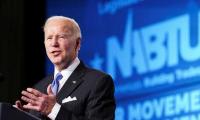The COVID-19 Pandemic remains invariably the largest global event of my generation. It will be remembered as a disaster that shut down the entire planet, brought world economy to its knees and killed millions of people. As the first health catastrophe of the digital era, it will also be remembered as an event that triggered a transition towards a tech-based health intelligence system.
The climax of the pandemic is presumably over. Hail our virologists and microbiologists who unfolded and decoded the complex genetic structures of SARS-COV2 and enabled mankind to develop vaccines. I often wonder that the development of vaccines itself is one of humanity’s greatest scientific achievements. With plans afoot to inoculate the entire planet, the year 2021 is going to be documented as the year of history’s largest public health initiative. Inarguably, this is the biggest vaccine rollout program I have seen in my lifetime. Nothing on this scale has been ever carried out before. Within just 15 months of virus discovery, vaccines have been developed, tested and approved which is an epoch-making achievement of mankind. Whereas virus may live with us for years to come, we have discovered ways to thwart it through collaborative international efforts. Globalized world is both fragile and robust in its own ways. The pandemic brought to the fore realization of an ironic yet ingenuous bond of shared destiny and shared vulnerability.
Pakistan had a nervous beginning and less tumultuous climax than foreseen. Notwithstanding a very strong third wave, we had encountered first two waves with a fair degree of success wherein new infections and mortality rate had remained much less than most parts of the world. Besides timely decisions, fast-track arrangements and effective implementations, the age distribution of our population worked to our advantage. Around 60 per cent of our population is less than 30 years of age. Nearly 50% of Punjab’s population is below 25 and 42.5% people are less than 15 years of age. We have only 4 % population in the 65 plus age group category, the most vulnerable age group. Over the course of the pandemic, our incidence has varied between 30 % to 34% in the 31-45 years age group, between 21 % to 24 % in 45-60 years age group and stayed around 10% in 61-75 years age group. Similarly, incidence remained around 30% in 16-30 years age group. This data indicates that around 70% infections were in below-45 age group where severity of symptoms is less likely in any case. However, age group alone does not determine the course if not capitalized smartly. In neighbouring India, the population age distribution is not much different to that of Pakistan, yet incidence, severity, case fatality and transmission rate are not same as ours. State interventions have to be carefully planned to make the most of favorable variables.
Most leading vaccines -- Moderna, BioNTech, AstraZeneca, Sinopharm, Sputnik V, Novavax, Covax and few more names have shown remarkable results. Due to immense global demand, supplies are not as smooth especially for under developed countries yet we are making effort to get our people vaccinated and achieve the herd immunity within this year. From among the available supplies, we have prioritized frontline workers followed by healthcare workers in the first two rounds of vaccination. As I write on these pages, the vaccination campaign for people of over 60 years of age is already into the fourth week. Phase-wise, the vaccination will be scaled up for general public. We must remember that no one is safe until everyone is safe. We plan to vaccinate most of the population around third quarter. For prioritized population, a system of online registration and SMS pin code has been developed in which people are informed of their date, time and venue for their own convenience. Walk-in service for over 65 years on CNIC is available.
I have strong reasons to believe that Pakistan is better prepared to carry out a strong Corona vaccination program than many other countries of the world owing to our long experience of managing large scale campaigns. Our teams are adept at managing vaccine supply chains, cold chains, storage, trainings, AEFI systems, communication programs and resource mobilization. For Service Delivery (supply side) and for Demand Generation (demand side) we already have developed integrated plans of Operations and Communication. Given the diversity in age groups and demographic settings, our teams are especially working on addressing reluctance, refusals and public concerns. A recent survey on Vaccine Hesitancy by renowned research body IPSOS reported that nearly 40 % Pakistanis disagreed to get themselves vaccinated immediately which shows how big a challenge health communication is going to be. Therefore we anticipate big challenge in demand generation and our technical teams have put together complete plans so that we are able to see the back of the pandemic by the year end.
The pandemic helped us achieve interesting feats as well. The expediency of the pandemic pushed us towards developing the ‘Core Capacities’ in our healthcare system we hitherto lacked. These Core Capacities i.e. ‘prevent, detect and respond’ are part of International Health Regulations and are envisaged in Punjab Health Sector Strategy 2019-2029 as well. It was unfortunate that the last government had made little efforts on Crisis Management and Epidemic Response. We had to start from scratch to develop these capacities, turning this colossal challenge into a historic opportunity. A milestone at that stage was the improbable task of developing 1,000-bed Expo Center Field Hospital within nine days. This facility was used to quarantine suspected and confirmed patients. It has now been transformed into one of the largest vaccination centers of the country. Another milestone was building testing capacity from scratch as the Pandemic progressed. Starting from just three labs in March 2020, we now have 22 Public sector Laboratories with the capacity to perform over 25,000 tests per day. Indeed, when the first lockdown was introduced on 20th March 2020, we had a cumulative testing capacity of just over 600 tests per day in all public and private labs.
During the course of the Pandemic, we kept on analyzing the exact scale of the mortality. We analyzed data of burials at different graveyards in Lahore to determine if at all there was any noticeable increase due to unreported deaths from COVID-19. With the exception of Miani Sahib graveyard in Lahore (48 Corona related reported burials in the peak month of June 2020) the rise in number of burials elsewhere was not significant even though Corona as a national emergency elicited diversion of resources to the Pandemic thereby contributing to increase in mortality from other causes. A study on pre and post Pandemic mortality and burials in Punjab with focus on hotspot areas is also being conducted to fully understand this perspective. However, desk analysis of key indicators, findings of different surveys and information from multiple sources indicate that the number of cases and mortality rate were not as significantly under reported as initially thought.
The pandemic presented certain caveats for us to build upon. Foremost was that health, economy and development are interwoven and integrated. The emerging concept of One Health is the pivot around which we need to further develop our larger development edifice. A modest beginning was that we aligned our workplans with targets of the larger UN Sustainable Developments Goals.
Second is that Health no longer is the responsibility of the government alone. This Pandemic amply proves that challenges of the new era i.e. Pandemics/epidemics from Corona to Polio, overcrowded hospitals, stunted growth, blood borne diseases (Hepatitis, HIV etc), universal coverage, climate change, research & development and social safety nets are as important for the Academia and the Private Sector as for the Government. Taking lead, the Government is acting as bridge for inclusive and meaningful partnerships. We need to think and act out-of-box. I am aware that we have a lot of catching up to do.
Three, we must stay in sync with the world on latest diagnostics, telemedicine, trainings, genomics, bio-forensics, research & data analysis, technology-based Patient Referral models and contact-tracing both in routine and emergency modes. We had set these goals in Punjab Health Sector Strategy, yet the Pandemic taught us that we have to stay ahead of timelines as you can be caught underprepared at any point of time.
Fourth is development of a culture for evidence-based decision-making. With the exception of some institutions, there was a disappointing lack of initiative on research and analysis two years back. In the last one year, it is heartening to see research papers and studies published by our health experts in leading universities. Our universities must produce the quality that we need to face 21st century challenges. Evidence-based decision-making requires precision in data collection and quality in research. We are working on enhancing collaboration among the Government Departments and the Academia to promote a culture of research.
Fifth is the status of preparedness and resilience for crises and challenges. By the start the Pandemic, we were nowhere on fighting emergencies. From diagnostics to High Dependency and Isolation Units, ICUs and trained HR, we were at the edge of a disaster that we were able to avert. In the last one year, we have developed capacities and the system has been made resilient for years to come.
In the end, let me reiterate that the Pandemic is not over by any means. We have for the time being made breakthroughs against the virus but our battle with it may continue. We have to outpace its mutations with our research to keep it at bay.
(The writer retired as Professor of Obstetrics and Gynecology at King Edward Medical University Lahore and currently serves as Health Minister of Punjab)
Outgoing ambassador pays farewell call on President Asif Ali Zardari at Aiwan-e-Sadr on Monday
Committee urges ministry to expedite appointment process, emphasizing improved governance
Former SCBA presidents say case will determine future course of country’s constitutional framework
Petitioner asks court to issue directives for registration of case against government officials
"Whether now or later, PTI will definitely demand its mandate," says Rana Sanaullah
PNAP leader condemns alleged manipulation and calls for fair and transparent elections in said constituency







